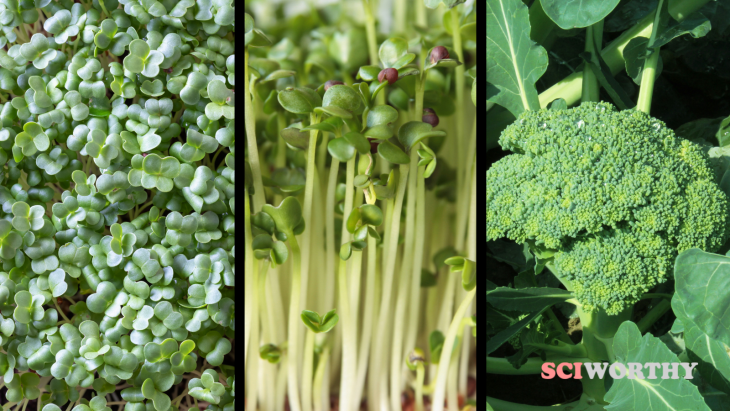Nothing says “foodie” like a dish garnished with microgreens, which are immature shoots of common vegetables harvested after just 2 weeks. But it’s not only gourmet cooks who get excited about microgreens. Microgreens are also emerging as a top choice for consumers with special dietary needs, such as patients with kidney problems or nutritional deficiencies. In the last few years, scientists have been putting these nutrition claims to the test as the production of microgreens continues to grow!
They start out like any other herb or vegetable, as a seedling, and instead of being grown for weeks and months, they sprout and are harvested to eat in a week or two. What makes them unique is that they are nutritionally packed full of nutrients we humans need – on average 10x more than their older counterparts. Broccoli microgreens, for example, require approximately 200 times less water and need 95% less time to grow than mature broccoli; moreover, they do not require the application of fertilizers or pesticides.
For this study, the five microgreens from the Brassicaceae family — broccoli, daikon radish, mustard, rocket, and watercress — were chosen for analysis. It is known that full-sized Brassicaceae vegetables are highly nutritious — they are good sources of potassium, calcium, iron, and zinc. These vegetables are also thought to have cancer-preventing compounds and antioxidants that soak up and neutralize harmful chemicals from the environment. However, because even individual Brassica species have different levels of these compounds, as evidenced by measurements in seeds, a more complete picture is needed. And this is just for the big vegetables — even less is known about these variations in Brassica microgreens.
A team of researchers at the University of Pisa set out to investigate and compare the essential oil, mineral, vitamin, sugar, and amino acid content of the five Brassica microgreen varieties to obtain a more complete overview of their nutritional value.
The microgreens started as seedlings in 10 cm diameter pots, irrigated daily and received between 100,000 – 150,000 Lux of light (Roughly the same amount as direct sunlight). They were harvested at about 5-7 cm tall. After this, the microgreens underwent biochemical analyses that extracted the various compounds (total sugars, chlorophylls, carotenoids, etc.) and essential oils they researchers sought to investigate.
The nutritional compounds (phytochemicals) such as ascorbic acid (Vitamin C) and Sugars (carbohydrates) were analyzed and measured. Additionally, the anthocyanins, carotenoids, and chlorophylls that are responsible for the pigmentation of fruits and vegetables were also measured.
The total sugar content was highest in Mustard (58.11 mg), double the total of Daikon and roughly three times higher than broccoli, rocket salad and watercress. Mustard was also highest in total Vitamin C (606.87 micrograms per gram) compared to the lowest by Rocket Salad (29.67 µg/g FW). The broccoli microgreens showed the highest levels of two important phytochemical categories — isothiocyanates and polyphenols. The antioxidant activity was highest in Broccoli, Daikon, and Watercress. Given that all microgreens had comparable antioxidant properties, the choice between these five microgreens is ultimately left to consumers’ preferences for texture and aroma.


